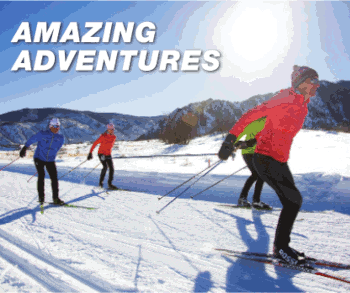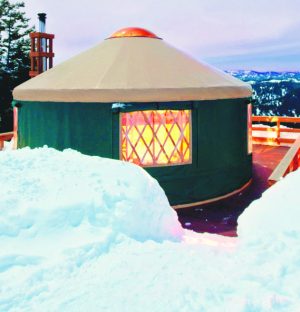October 07, 2016 – FIS published a new FAQ on Oct. 5th clarifying points on its recent decision to implement a maximum pole length in all FIS-sanctioned classic competitions. According to the FAQ, all FIS Competitions will now be required to have a standardized measurement stations to insure athletes are complying with the new rule that poles should measure less than 83% of height athletes height wearing ski boots.
“The pole measurement device should already be available during official training so that athletes can check their equipment themselves. The controls will be performed randomly and/or will be targeted. It will be possible to perform the measurements before the start and after the finish. If necessary, more than one measurement device will be available,” reads the release.
![Double pole battle as Poland's Kowalczyk (l) bests Norway's Johaug at the Pursuit finish. [P] Nordic Focus](http://skitrax.com/wp-content/uploads/2011/12/Kowalcyzk-Johaug-301211ah0011.jpg)
The release states that athletes will not be allowed to start should their poles not comply with the regulations. However, US Ski Team Head Coach Chris Grover, who was at the meetings in Zurich, stated that he does not think that all racers will be measured at every race. “Whether all athletes are measured at the start of every race will be up to the TD and the Jury to decide,” he said in an email.
The FIS release also clarifies what happens if a pole shaft is broken. According to a release, if one pole is broken and the athlete is skiing on one pole above the 83% limit, “skiing with poles of different lengths is seen not as an advantage.” However, in the case that an athlete breaks both poles in the course of a competition, “the poles must comply with the 83% body length rule.”
The FIS release states that the new rule is only one of the measures taken in response to the upsurge in double poling in classic competitions. “The maximum pole length rule does not stand alone in the attempt to preserve classic technique. It is only one out of a set of tools. For a few years now a lot of attention has been paid to finding suitable courses for classical technique competitions. Cross-Country Juries have been stricter and have been sanctioning half skating steps, gliding phase in herringbone, skating in corners etc.”
The proposal that was adopted was taken from the German delegation headed by Andreas Schluetter. The FIS release contends that many coaches saw a recent upsurge in longer classic poles in training. Earlier, FIS cited a Norwegian survey that found that the optimal pole height for steep uphill double poling is close to 90% of body height, while on flatter sections it is closer to 85%.
Still, Grover of the US Team claimed that of the 10 international class athletes he surveyed after the rule change, only one had poles that were above the 83% limit. According to Grover, the athlete “was slightly above because he was currently experimenting with poles that were longer than anything he has ever used before.”
Canadian coach Ivan Babikov held the same view saying, “It’s like the same normal length of what the guys use now. It doesn’t really affect me or anybody I know.”
Still, FIS claims that the action was necessary to help preserve classic skiing. While admitting that the optimal time for such a rule change would have been earlier this summer, FIS stated that the delegates, who including former athletes and current head coaches, felt that such a rule change was needed given the rapid evolution of the sport. According to the release, “Even if the current situation seems to be more or less under control at the World Cup level, the situation is definitely more challenging at lower levels and popular races. The current developments in training methods and use of equipment especially for the young athletes are also some important factors that were taken into consideration.”
According to Grover, the rule was not intended to make any athletes cut down their poles. “Rather, the rule is intended to prevent the progression of pole lengths upwards to poles that are skate length or longer, and to possibly help prevent the emergence of double-pole techniques that would no longer be recognizable as a technique within the classic technique group.”
Health Concerns
Andy Newell, one of the top US Sprinters, expressed concern in an interview with Fasterskier.com about the possibility of orthopedic problems related to shorter poles. “There is a reason why skiers from the 80’s and 90’s were more likely to develop lower spine problems. I would worry that regulating pole lengths too much could set us back,” said Newell.
When asked about this issue, Pierre Mignerey, the FIS Cross-country Race Director stated that he had medical support for the ruling-or at least no medical data to suggest that shorter poles could be more harmful. “Of course there are always some positive and negative impacts in all decisions and rules,” he said in an email, “But the German proposal was based also on the health and orthopedic consequences for the juniors and youth athletes using always longer poles and overtraining double poling. This argument was supported some other team doctors.”
Still, Mignerery said that should any new evidence come to light on this subject, FIS would reconsider. “Athlete health is one important factor in this decision,” he said, “Of course all new arguments will be considered in the future and the FIS medical committee should analyse it and give us a feedback.”
Other rule changes to come?
When asked about the possibility of other equipment restrictions in the future, both Grover and Mignerey said they had no concrete proposals. Mignerey said the idea of controlling the materials used in pole construction has been discussed outside of committees, but no concrete proposals have been made. “In any case if such a solution should be approved it must be taken a long time in advance in order to give enough time to the industry to adapt their products,” he said.
Grover was skeptical of the idea of pole material controls since policing the rule would be so difficult that it would make cheating easy. He also cited the protection of the ski pole industry. When asked about the possibility of limiting poles to aluminum shafts, he said “The CCC (Cross Country Committee) did not want to impose a restriction that would negatively impact the industry either immediately or in the near future.” Swix currently retails their Swix Triac 2.5 for $460. Grover also said that the same reasoning applies to a ban on fluorocarbon waxes.
Mignerey added that there could also be restrictions on basket size, but that has also not been considered outside of committee.
Response from athletes
Many athletes and fans have expressed skepticism about the decision. Marty Hall, a former Canadian and US National team coach commented in an online forum, “How about asking us guys in the field, coaches at all levels, skiers at all levels for our opinions, instead of stuffing this stupid move down our throats?” He also claimed that with moves like this skiing risks becoming a “laughing stock” in international sports.
Ben Saxton, a former US Ski Team member who has successfully double poled in SuperTour and US National classic races commented that the rule “…seems like it may have been a hastily conceived stopgap (that will be difficult to enforce and will most likely lead to some sort of nebulous consequences for athletes) meant to fix an issue which doesn’t seem to trouble the athletes too much.”






![National camp action [P]...](https://skitrax.com/wp-content/uploads/2019/08/Duluth-4-2019-08-08-at-10.46.51-AM-300x246.png)
![Matt Liebsch on the CXC Elite Team [P] CXC...](https://skitrax.com/wp-content/uploads/2019/08/Matt-Liebsch-CXC.2-525x700.4-300x267.jpg)
![Dan LaBlanc [P]...](https://skitrax.com/wp-content/uploads/2019/08/Dan-LaBlanc-img_1855.3.jpg)

![Chris Grover [P]](http://skitrax.com/wp-content/uploads/2015/02/Chris-Grover.2-2015-02-24-at-2.29.41-PM.2.png)
![Noah Hoffman [P] Pam Doyle](http://skitrax.com/wp-content/uploads/2016/03/NoahHoffmanUSA_pamdoyle-ww.2.jpg)
![Ivan Babikov [P] Heinz Ruckemann](http://skitrax.com/wp-content/uploads/2010/08/Babikov-2-WHP2009011737.jpg)
![Andrew Newell [P] Nordic Focus](http://skitrax.com/wp-content/uploads/2016/01/Newell160105mf090.jpg)
![Pierre Mignerey [P]](http://skitrax.com/wp-content/uploads/2014/11/Pierre-Mignerey-58363_G08_W01.2.jpg)
October 8th, 2016 at 12:05 am
I don’t know if it is on purpose, but there is no mention of no double poling zones in this article, which I saw in another release. We do have some experience with no skating zones back in the mid-80s with the skating fiasco that took place then. No planning, and who knows how much cheating went on then.
I’m not sure FIS has really thought of all the extra personnel it will take to police all of these extras responsibilities to control cheating.
I can’t see lower levels of racing even caring about all these considerations.
Jury meetings beyond belief—-races won’t be much fun anymore.